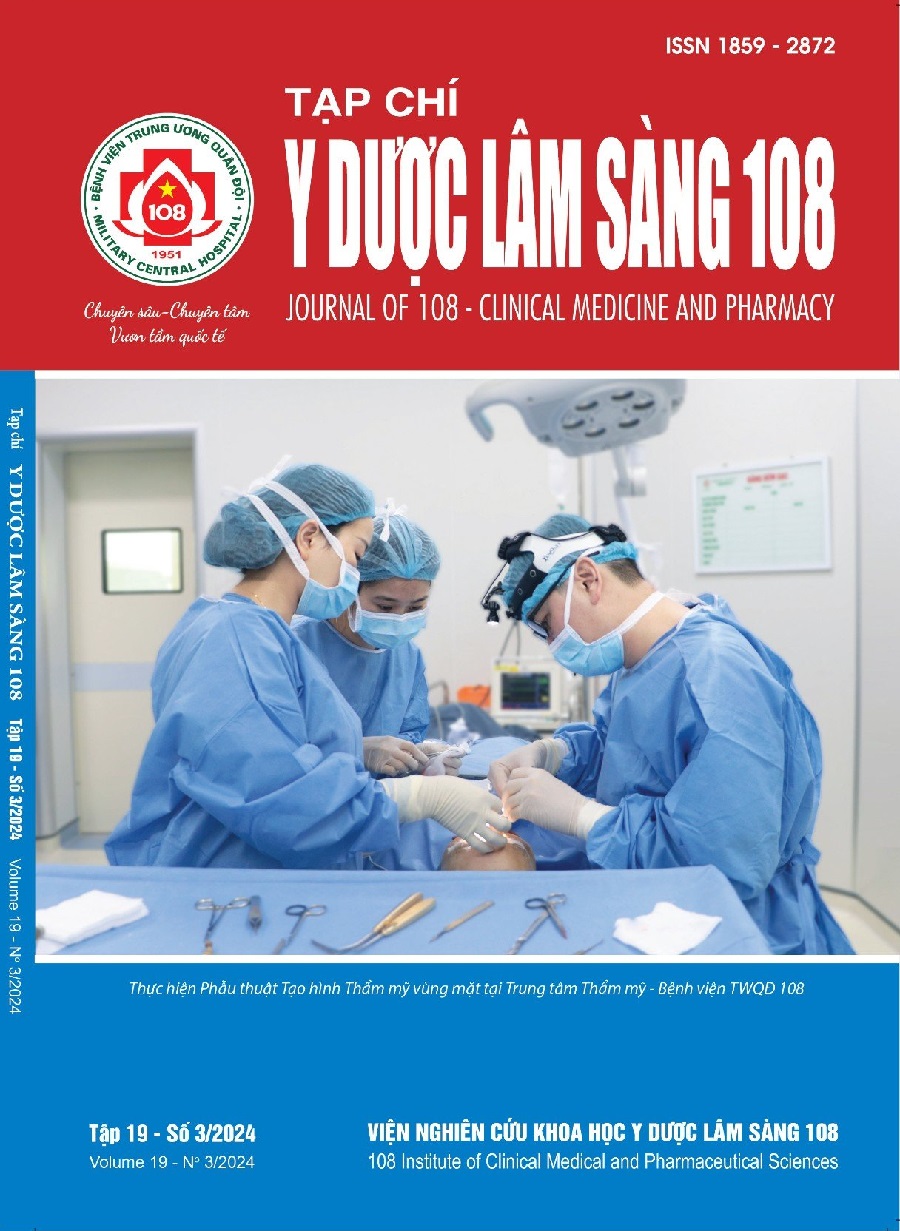Characteristics of the pathology of periapical periodontitis at Hanoi National Hospital of Odonto-Stomatology
Main Article Content
Keywords
Abstract
Objective: To review the clinical and subclinical features of patients with periapical periodontitis who came for examination and treatment at the National Hospital of Odonto-Stomatology from April 2020 to April 2021. Subject and method: A cross-sectional descriptive study. Result: There were 25 male patients (41.67%) and 35 female patients (58.33%). The main reasons for seeking examination were swelling and pain, accounting for 56.67%, followed by tooth discoloration and presence of sinus tract at 11.67% and 10%, respectively. Cause by tooth traumatic: 21.67%, pultitis: 38.33%. Symptoms included tooth tenderness on percussion (91.67%), tooth discoloration (71.67%), tooth mobility (65%), and dental erosion (36.67%). The diameter of the lesion on radiographs was ≤ 5mm in 71.67% of cases and > 5mm in 28.33%. Conclusion: The age group ≥ 45 has the highest rate: 50.00%. Patients often go to examine the cause of pain and swelling. Incisors are the most common teeth among single-rooted teeth studied, the most common reason being tooth trauma. Clinical symptoms are faint with pain percussion accounting for the highest rate. Damage to the apical area on X-ray is mainly small in size (≤ 5mm) with a rate of 71.67%.
Article Details
References
2. Phạm Thanh Hải (2008) Nghiên cứu điều trị nội nha lại tại Viện Răng Hàm Mặt Quốc gia năm 2008. Luận án tốt nghiệp bác sĩ chuyên khoa II, Trường Đại học Răng Hàm Mặt, tr. 3-7.
3. Kim S (2010) Prevalence of apical periodontitis of root canal-treated teeth and retrospective evaluation of symptom-related prognostic factors in an urban South Korean population. Oral Surg Oral Med Oral Pathol Oral Radiol Endod 110(6): 795-799.
4. Peters LB, Wesselink PR (2002) Periapical healing of endodontically treated teeth in one and two visits obturated in the presence or absence of detectable microorganisms. International Endodontic Journal 35: 660-667.
5. Bystrom A et al (2006) Healing of periapical lesions of pulpless teeth after endodontic treatment with controlled asepsis. Endod Dent Traumatol 3: 58-63.
6. Waltimo T, Trope M, Haapasalo M, Ørstavik D (2005) Clinical efficacy of treatment procedures in endodontic infection control and one year follow-up of periapical healing. Journal of Endodontics 31(12): 863-866.
7. Trần Thị An Huy (2018) Hiệu quả sát khuẩn ống tuỷ bằng natri hypoclorit, calcium hydroxide và định loại vi khuẩn trong điều trị viêm quanh cuống răng mạn tính. Luận án tiến sỹ y học, Trường Đại học Y Hà Nội, tr. 55-83.
8. Vũ Thị Quỳnh Hà (2009) Đánh giá kết quả điều trị viêm quanh cuống mạn tính ở răng hàm hàm dưới bằng phương pháp nội nha. Luận văn thạc sỹ y học, Trường Đại học Y Hà Nội, tr. 56-70.
9. Phạm Đan Tâm (2002) Đánh giá kết quả điều trị viêm quanh chóp răng mạn tính các răng một chân bằng điều trị nội nha. Luận văn Thạc sĩ Y học, Trường Đại học Y Hà Nội, tr. 23-47.
 ISSN: 1859 - 2872
ISSN: 1859 - 2872
